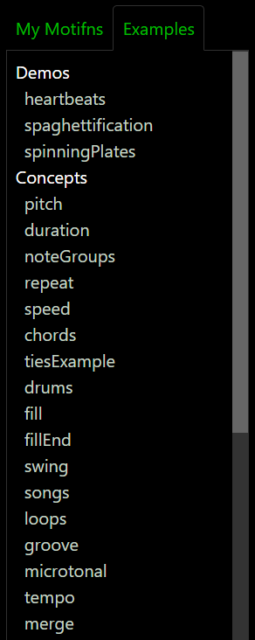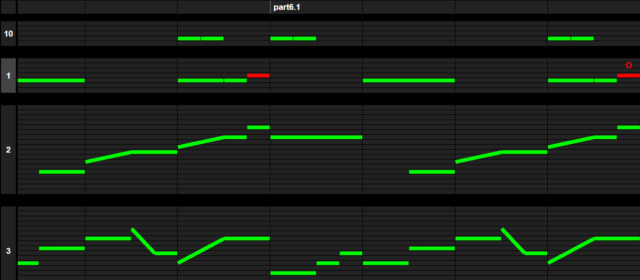I chose Motifn as the live coding platform. It is a platform that focuses on creating “visualized “music by utilizing “quite a lot of third parties” like Tone.js and receiving support from live coding artists, namely Alex McLean and Charlie Roberts, the creators of the live coding software Tidal Cycles and Gibberwocky respectively. Later on, I did find that there are quite a lot of similarities between the language used in Motifn and in Tidal Cycles. I guess that’s because after all, they are all created based on JS.
It basically provides two modes for coders to play around with. One is “FUN”, which is to code on the web, and the other one is “DAW”, which is to connect MIDI to play music. I mainly tried the “FUN” mode as it is more convenient (but definitely more risky lol).
In my exploration, I found that this platform is indeed quite user-friendly as it contains music examples as well as interactive tutorials for coders to self-study. The tutorials not only teach users how to create melody based on notes and rhythms based on using drums but even JavaScript basics. It is definitely very helpful for newbies like me. But still, this is not a highly integrated platform like Garageband on the ios system (I played around quite a lot with it), it still requires users with fundamental knowledge of coding. Nevertheless, I believe that this will not be “live coding” if it doesn’t contain the process for users to code themselves.



The UI is also user-friendly. Users can manually adjust the space of the three sidebars based on their preferences or needs. Here, I really want to point out the note tracks this platform provides, which is absolutely one of its best features. Similar to the tracks in Garage Band, this system also demonstrates the track for each instrument, and users can check each note by clicking on them, and in return, the corresponding code part will also be highlighted by the cursor.

For the practical usage part, I first learned the basic structure of programming on this platform and found that it contains three parts: 1) Define a function (like function song ()), 2) “Let” function for each track (let ss = songStruture ( { ), and 3) return song. Then learned details of how to create melodies, rhythms, and arrange music structure.
In terms of the content that we can create on this platform, I feel like there are a lot of very interesting effects that we can make, for example, the “ties” and the “vibrato” that can trigger very funny sounds. Although it’s true that this platform doesn’t provide many preset synths for users to choose is also possible to use this platform to create absolutely great pieces if you know quite a lot about composition. Like this one:
And here is a demo I made: